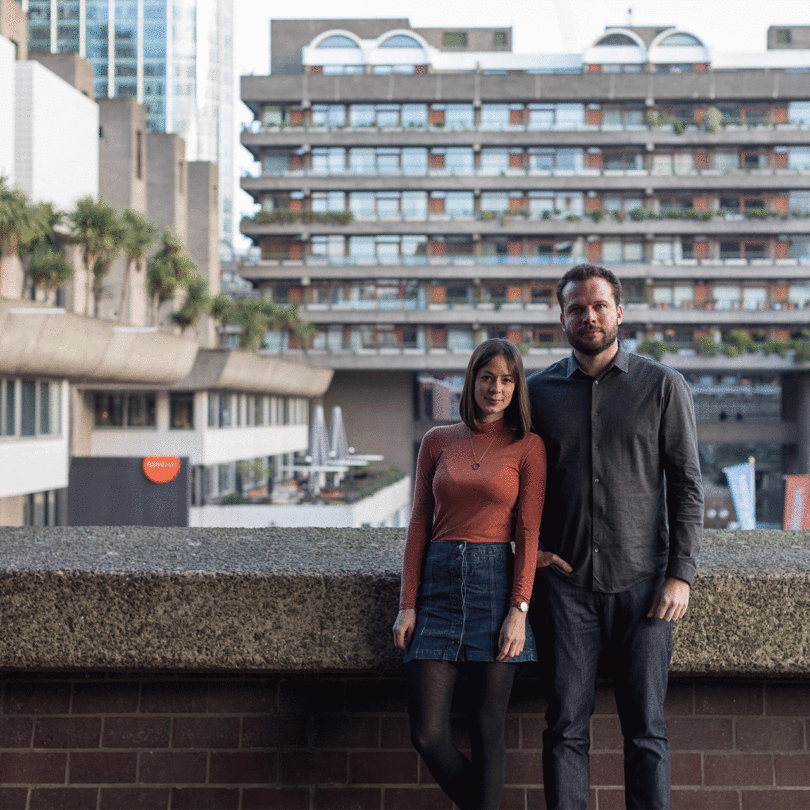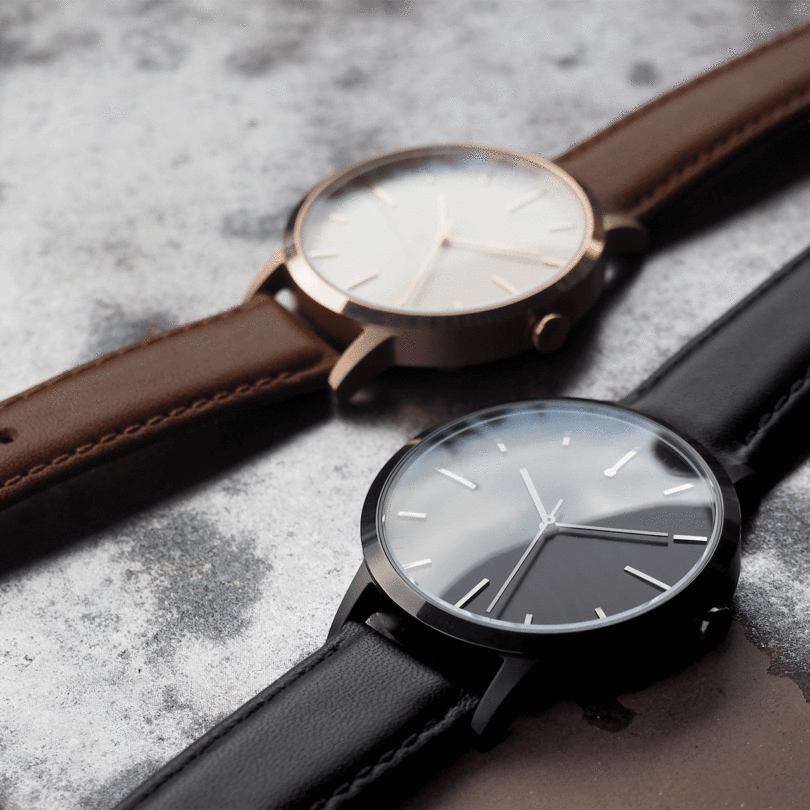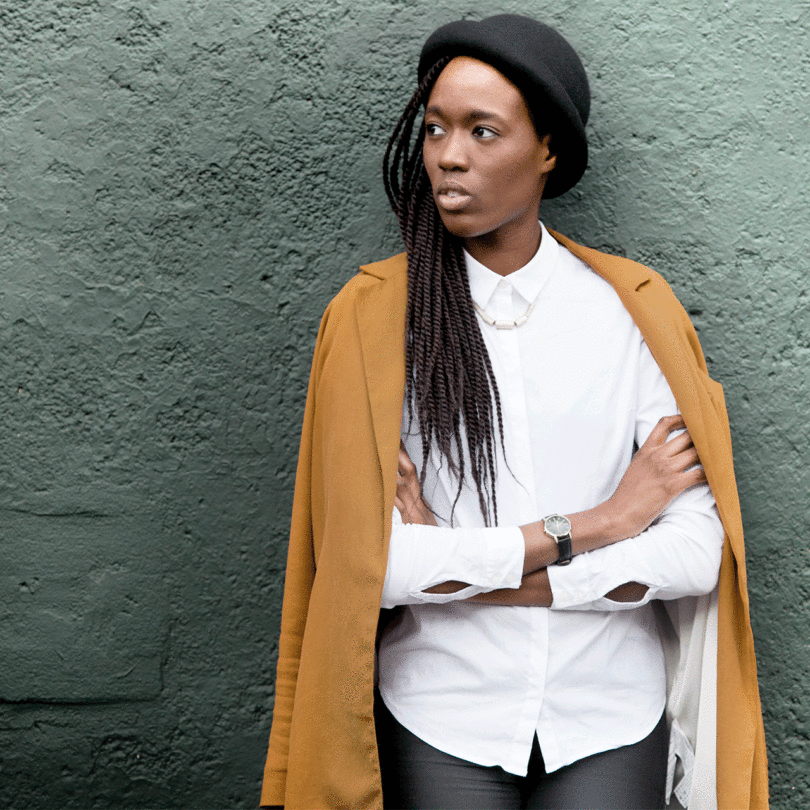London-based product designers Kirsty Whyte and Paul Tanner designed their first timepiece after Kirsty couldn’t find a watch small enough for her delicate wrists – or at least one that wasn’t covered in branding or diamontes. They had spotted a gap in the market: between fashion-driven overtly feminine watches and masculine, hyper-connected digital watches, there was space for something classic, understated and quiet – and Freedom to Exist was born. ‘We wanted a little space away from the overwhelming noise of branding and technology,’ says Kirsty. ‘We believe freedom is the freedom to choose, to fall in love, to wear what you want, how you want to. It is the Freedom To Exist.’
The first Freedom to Exist watch was the 30 Edition, named after its 30mm case – the watch Kirsty was looking for but couldn’t find. ‘While we were on the hunt for a watch for me, we were in Liberty and overheard a lady with the same issue, so we were confident there was an audience out there,’ says Kirsty. They were right and the timepiece was an immediate hit, in no small amount due to the thought that went into every detail. ‘There are so many elements that we’ve carefully designed and specified, we sometimes drive our manufacturers a little crazy!’ These carefully thought-through elements include the domed glass, the brushed case and polished bezel, the way the hands perfectly align with the markings on the dial, the genuine leather straps chosen by color to complement all skin tones, the Swiss movement that guarantees quality, and the tactile quality once you get your hands on one.
The 30 Edition was such a success, that soon people were asking for a larger size. ‘The most frequent feedback on the 30 Edition was “I love my 30mm watch, do you have a larger size so that my boyfriend can also wear one?”, or “I prefer to wear an oversized watch, do you have the same design but a bit larger?”,’ says Kirsty. ‘As we are a bootstrap startup and completely self-funded, we did not have the money to place an order for the larger watches straight away.’ To avoid having to wait for sales of the 30 Edition to fund the new larger size, they took to Kickstarter.
‘We successfully funded the production of two models of the 40 Edition watch, but it was far from stress-free,’ laughs Kirsty. ‘We had assumed that we would put up the listing and the money would just roll in, but we had to promote and market our listing every single day. Towards the end, as we got closer to our target it did become easier as people seem more willing to support a successful project, but getting the initial traction was harder than we had anticipated. We learned a huge amount and would defiantly use Kickstarter again.’
With so much going on, you’d assume that Kirsty and Paul were working full-time on their start-up, but in fact they both have full-time jobs in the design industry – Kirsty as creative and product director for Soho House and Paul as a creative consultant. Kirsty studied decorative arts at Nottingham Trent University and moved down to London for a sales job on the shop floor of Habitat. ‘I wanted to be surrounded by good design,’ she says. It wasn’t long before she made her way to their head office and into their design department, where she met Paul. Having gained some industry skills, she set up her own design studio in 2008 and designed for Made.com, Modus, Oliver B, Heal’s and Normann Copenhagen. A year in industry as part of Paul’s industrial design degree at Brunel University led him to Habitat (and Kirsty!), before the couple both took jobs at Made.com and spent a year working in China.
‘Our year in China was a very long year, but it was incredibly rewarding,’ says Kirsty. ‘We had both traveled to China and the Far East for work many times before, but living there really gave us some valuable insights. Made.com released two collections a week with just four product developers – there was no downtime between collections at all! I learned how to really multitask, how to be extremely clear when communicating with others and it really helped me hone my skills,’ which I’ve used ever since. We also learned a lot about ourselves – and each other. It was the ultimate working relationship test!’
The skills they’ve acquired over their impressive careers were almost certainly sparked in childhood. ‘My mum always encouraged me to do art,’ says Paul. ‘I really wanted to do business studies and economics, but she insisted I took art instead, so I was very lucky.’ Kirsty’s childhood was equally creative. ‘My Dad was from an engineering background and started his career as an apprentice boat builder, so I always had access to a well-stocked toolbox,’ she says. ‘But the creative flair really came from Mum. My treat before bedtime was coloring-in and we were always making stuff for my dolls house. When I was at primary school she volunteered to help with art in class, they wouldn’t let her go and she ended up volunteering for another 25 years.’
Freedom to Exist is now coming into its second year, and everything they’ve achieved has been squeezed into evenings and weekends, but they’re still as passionate as they ever were – despite the heavy workload. ‘When we get an order through we do a little high five – it really does give you a buzz of happiness,’ says Kirsty. ‘Paul and I find fun in the hard work, we love a productive Sunday when we’re working side by side – it’s very fulfilling. We never really switch off – when we’re not working on Freedom to Exist, we’re talking about it. We do sometimes wonder what other couples do in their spare time!’
As it comes into holiday season, if you’re still looking for the perfect gift, Kirsty and Paul have teamed up with designers Sunny Todd and The City Works to offer a choice of wrapping. Your holiday shopping sorted and gift-wrapped? Now that’s what we call freedom to exist!
from Design MilkDesign Milk http://design-milk.com/kirsty-whyte-paul-tanner-create-timepieces-spare-time/









No comments:
Post a Comment